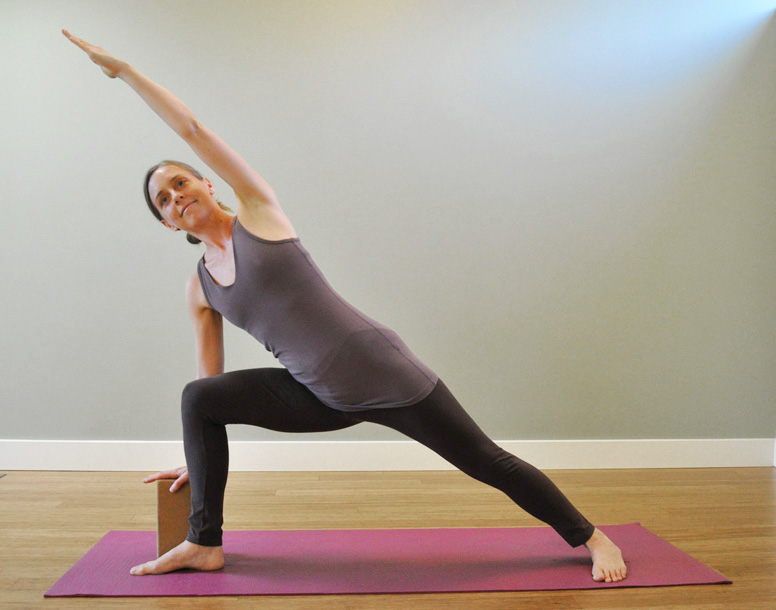
If your ideas about yoga come from Instagram, you might want to reconsider. While there are beautiful photos published every day, most of them depict either extreme poses or the most extreme versions of more common poses. Most of the people who practice these poses were born with structures capable of extreme range of motion. So the logic is, they should be practicing in a way that capitalizes on this.
Actually, people who are born bendy may not be doing themselves a favor by practicing extreme poses. Yoga asana is about balance. Sutra 2.46 says: “The physical posture should be steady and comfortable.” (Alistair Shearer’s translation) Other translations use the phrases “firm and soft,” or “steady and easy.” Flexibility needs to be balanced by strength. And something as simple as using a yoga block—in the same way an inflexible person might—can help a flexible person achieve balance.
How Flexible People Can Benefit from Using a Yoga Block
We often think of yoga blocks as “crutches” for the less adept. Only inflexible people use a yoga block in standing poses, right? That might be true in most classes. But consider this: when a flexible person places his/her hand on the floor in Trikonasana (Triangle Pose) or Parsvakonasana (Side Angle Pose), quite often they sacrifice strength in their legs. For most people, going to the end range of their mobility in standing poses disengages the legs.
How can you tell if you’re disengaging your legs? If you find yourself leaning on your bottom hand, your legs have stopped supporting you as they should. This can happen for anyone, but it’s especially likely to happen when you’ve either widened your stance too far or when your hand is flat the floor.
So for a flexible person, such as the person in the photo above, coming up a bit higher and placing a yoga block under her hand allows her to engage her legs and her core—as long as she’s not leaning on the block. This helps her build strength, which helps her balance her flexibility. It also energizes her practice.
How to Practice with a Yoga Block
If you’re flexible and normally like to place your hand on the floor, try this:
- Stand on a yoga mat with your feet a leg’s length apart. Place a yoga block at its highest height on your mat on the outside of your right foot.
- Turn your right leg out 90 degrees and your left foot, shin, knee, thigh and hip inward until you can ground strongly into your back foot. Do not try to square your hips.
- Extend your arms straight outward from your shoulders.
- Bend your right knee so that it ends up directly over your right heel.
- Extend your ribcage outward, over the right thigh and place your hand on the block.
- Extend your left arm overhead, next to your ear.
- There are two options here: (1) Actively press your hand down into the block and feel what happens in your upper body. (2) Barely graze the block with your hand and feel what happens in your legs and core.
- Take 5 to 10 deep breaths here.
- Ground your left foot to lift your body up. If you can lift your torso up by grounding your left leg, you know that you are engaging your legs.
- Turn your feet back to parallel. Take a few breaths before moving to your second side.
- Try this in Trikonasana too.
